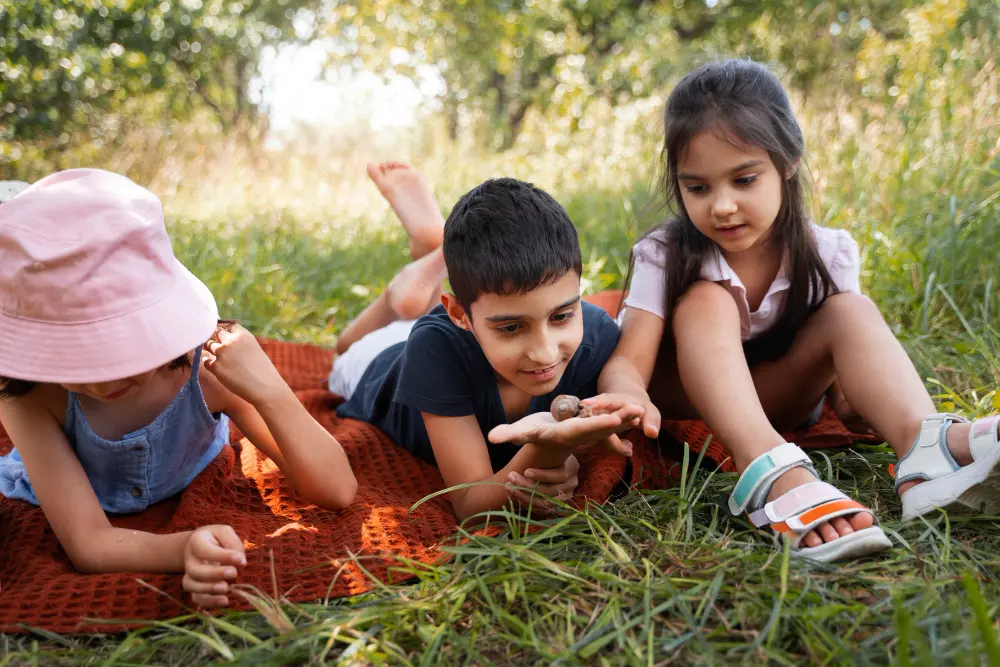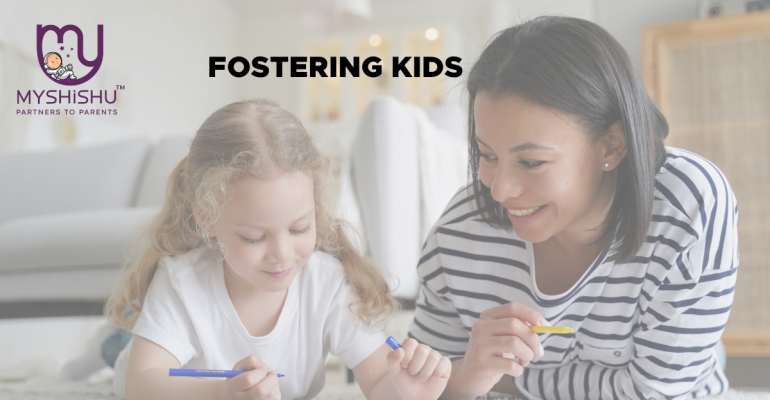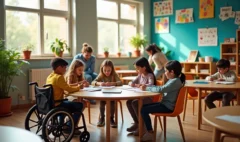Fostering Independence in Kids: 6 Tips For Bright Future
Fostering Independence in Kids: 6 Tips For Bright Future
Introduction
In the intricate tapestry of parenting, the pursuit of fostering independence in kids stands as a pivotal thread. Nurturing a child’s ability to navigate life independently is an investment in their future, laying the groundwork for resilience and self-confidence. As parents, our journey involves shaping not just the practical skills our children acquire but also the emotional and cognitive strengths that empower them.
In this comprehensive guide, we embark on a quest to explore the profound significance of fostering independence. From the early years, where foundations are laid, to navigating challenges and celebrating milestones, each chapter unfolds strategies and insights to guide parents on this empowering path. Let’s delve into the intricacies of raising self-reliant individuals, uncovering the transformative impact of fostering independence in the hearts and minds of our children.
Why Fostering Independence in Kids Matters
Fostering independence in kids is not merely a parenting goal; it’s a cornerstone of their holistic development. As children cultivate independence, they gain the confidence to explore their capabilities and face life’s challenges head-on. This process nurtures resilience, teaching them to adapt and learn from their experiences. Independent kids are more likely to become self-reliant adults who can confidently make decisions, solve problems, and contribute meaningfully to society.
Moreover, fostering independence instills a sense of responsibility as children learn the value of accountability and the impact of their actions. Embracing independence from an early age equips children with essential life skills, preparing them for the complexities of adulthood. In essence, fostering independence is a gift that keeps giving, empowering children to unfold their potential and flourish in a world full of opportunities and uncertainties.
1. Letting Them Make Mistakes: A Crucial Step in Fostering Independence
In the intricate dance of parenting, allowing our children to make mistakes emerges as a pivotal move. It may seem counterintuitive, but letting kids stumble and learn from their errors is a crucial aspect of fostering independence. Mistakes serve as powerful teachers, imparting valuable lessons about consequences, responsibility, and resilience.
When we shield our children from every misstep, we unintentionally hinder their growth. Allowing room for mistakes grants them the freedom to explore, experiment, and understand the outcomes of their actions. It’s in these moments of trial and error that they develop problem-solving skills, learn the art of decision-making, and build a robust foundation for independent thinking.
As parents, our role is not to eliminate every obstacle but to provide a safety net that encourages exploration. Embracing mistakes as learning opportunities fosters a growth mindset, instilling in our children the confidence to confront challenges independently. In this chapter, we’ll unravel the art of letting go and empowering our kids to transform mistakes into stepping stones toward a future filled with resilience and self-assurance.
2. Involving Them in Authentic Household Tasks: A Gateway to Independence
The journey toward independence often begins right at home, within the realm of authentic household tasks. Engaging children in practical responsibilities not only lightens the load for parents but also serves as a powerful tool for instilling a sense of independence and accountability in young minds.
From setting the dinner table to folding laundry, these seemingly mundane tasks become stepping stones for children to develop essential life skills. Involvement in household chores not only teaches them the basics of organization but also cultivates a strong work ethic and a sense of responsibility. Moreover, it fosters a feeling of contribution to the family unit, reinforcing the understanding that everyone plays a role in maintaining a harmonious and functional home.
This chapter will delve into the art of involving kids in authentic household tasks, providing practical insights on age-appropriate responsibilities, the benefits of such engagement, and how it lays a solid foundation for their journey toward independence. As we integrate these tasks into their routine, we empower our children with the tools they need to thrive in an independent and interconnected world.
3. Offering Choices and Freedom Within Limits: Nurturing Decision-Making Skills
Fostering independence in children involves striking a delicate balance between offering them choices and freedom while maintaining essential boundaries. This intricate dance empowers kids to make decisions, fostering a sense of autonomy and responsibility without venturing into the realm of chaos.
The key lies in providing age-appropriate choices and allowing children to exercise their decision-making muscles within a structured framework. From selecting their outfits to deciding on after-school activities, these choices empower them and contribute to the development of crucial life skills. However, setting limits is equally crucial, as it establishes a sense of safety and reinforces the understanding that choices come with responsibilities.
This chapter will unravel the art of offering choices and freedom within limits, exploring strategies for effective communication and collaboration. By allowing our children the freedom to make decisions while providing a supportive structure, we lay the groundwork for independent thinking and responsible choices. Let’s embark on this journey of empowerment, where choices become stepping stones toward a future where our children confidently navigate life’s myriad paths.

4. Giving Them Space: Cultivating Independence through Freedom
In the intricate tapestry of parenting, there comes a crucial moment when giving our children space becomes a powerful catalyst for fostering independence. It’s about creating an environment where they can spread their wings, explore their interests, and forge their unique identity.
As parents, our instinct may be to shield our children from the world’s uncertainties. However, providing space doesn’t mean abandoning them; it’s a conscious act of granting autonomy while maintaining a safety net. This chapter explores the delicate art of giving space, whether it’s encouraging independent play, respecting personal boundaries, or allowing time for reflection.
By giving our children space, we offer them the opportunity to discover their passions, make choices, and learn from their experiences. This chapter will delve into the importance of trusting in their abilities, fostering self-reliance, and creating an environment where independence flourishes organically. Let’s explore the transformative power of giving space—a gift that propels our children towards a future where they confidently navigate life’s uncharted territories.
5. Avoiding Over-Correcting: Allowing Growth through Imperfection
In the intricate art of fostering independence, one of the most challenging yet crucial maneuvers is avoiding the pitfall of over-correcting. While our parental instincts may drive us to guide our children toward perfection, the reality is that growth often thrives in the soil of imperfection.
This chapter delves into the delicate balance of guiding without stifling the learning process. Over-correcting can inadvertently communicate a lack of trust in a child’s abilities, hindering their confidence and inhibiting the development of problem-solving skills. Instead, allowing room for imperfection becomes a powerful tool for resilience and self-discovery.
We’ll explore strategies for constructive feedback, fostering a growth mindset, and celebrating effort over perfection. By embracing the concept that mistakes are stepping stones to mastery, we empower our children to learn, adapt, and, most importantly, develop a healthy sense of independence. Join us on this journey of reframing imperfections as opportunities for growth, guiding our children towards a future rich with self-assurance and resilience.
6. Designing Your Space with Independence in Mind: Empowering Environments for Growing Minds
The spaces in which our children live, learn, and play have a profound impact on their development. Designing these environments with independence in mind not only nurtures a sense of autonomy but also cultivates essential life skills. This chapter explores the art of creating spaces that empower children to explore, learn, and develop a strong sense of self-reliance.
A well-designed space encourages independent play and learning. Consider organizing toys and materials in a way that promotes easy access and encourages children to make choices. Providing designated areas for different activities fosters a sense of order and responsibility.
This chapter will delve into practical tips for designing bedrooms, play areas, and study spaces that inspire independence. From age-appropriate furniture arrangements to incorporating storage solutions that encourage tidiness, each element contributes to a space that supports a child’s journey toward autonomy.
Join us as we explore the transformative power of intentionally designing spaces with independence in mind. By creating environments that align with a child’s developmental needs, we pave the way for confident, self-reliant individuals to emerge and thrive in every aspect of their lives.
The Bottom Line: Nurturing Independence, Shaping Futures
In the tapestry of parenthood, the quest to foster independence in our children weaves a narrative of growth, resilience, and empowerment. As we navigate the various strategies explored in this guide, it becomes clear that independence is not just a destination but a journey—one that requires patience, guidance, and a mindful approach.
The bottom line is this: by embracing the principles of fostering independence, we equip our children with the tools they need to navigate life confidently. From allowing them to make mistakes to involving them in household tasks, offering choices, and designing empowering spaces, each action contributes to a holistic development that extends beyond practical skills to encompass emotional strength and cognitive resilience.
In cultivating independence, we are not only shaping the future of our children but also contributing to a society of confident, responsible individuals. So, let us embark on this journey with intentionality, celebrating each milestone and embracing the beauty of watching our children unfold their wings as they soar toward a future filled with promise and possibility.











